Commercial Thermal Imaging
Electrical
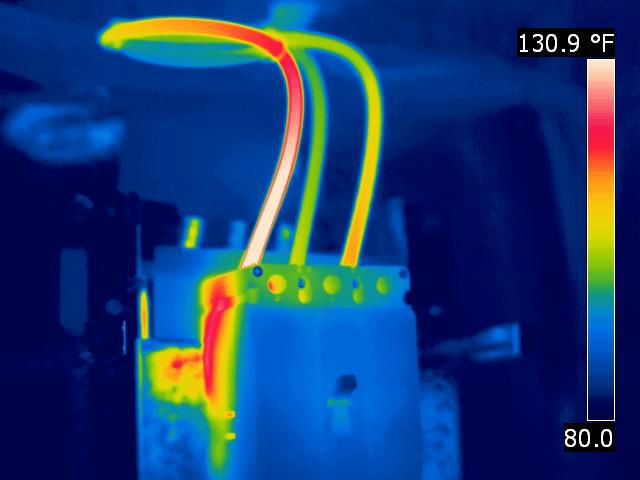
Infrared inspections can reveal “hot spots” that are commonly found in electrical equipment prior to failure. Loose connections, overloaded circuits and faulty components are the most common problems found during an electrical scan.
We document all “exceptions” and provide a written report with thermal and digital images that can also be used in the “commissioning” of new buildings or as part of a pre-purchase investigation of an older building.
Avoid costly unscheduled shutdowns, maximize the efforts of your maintenance personnel and increase your workplace safety by scheduling a routine infrared survey today.
Mechanical
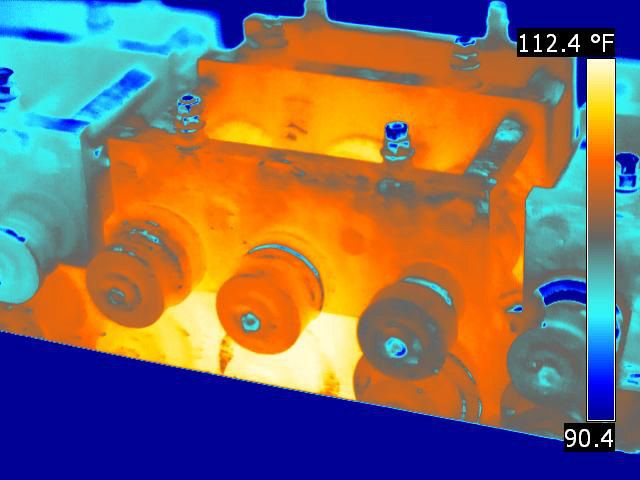
Running mechanical equipment until failure occurs can be a very expensive way to run a maintenance program. Equipment that is operating inefficiently will run “hot” causing other components to wear out prematurely. Improper lubrication, misalignments and failing parts are just a few of the common problems that can be seen during an infrared scan of mechanical equipment.
Properly scheduled thermal inspections, as part of a predictive maintenance program, can provide early detection of problems and avoid costly unscheduled shutdowns.
Block Wall
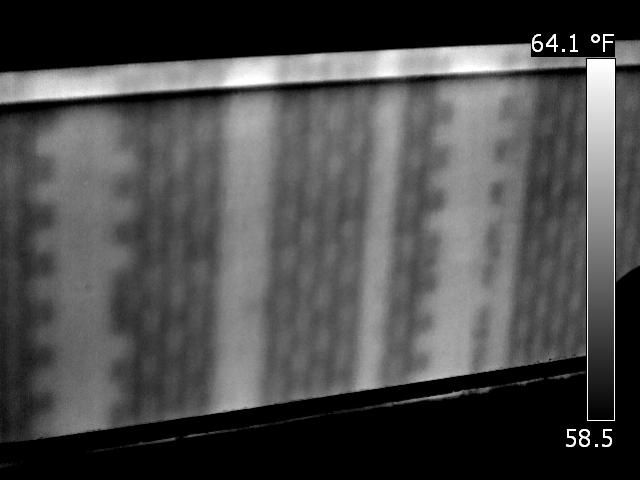
Structural reliability in a concrete block wall system is ensured by the grout and reinforcing rod installed into the block wall cavities during construction. Grout locations are pre-engineered to be located at various intervals that are determined by the height, length and depth of the wall.
Structural grout often gets missed completely or cavities get partially filled during construction, leaving no easy way to verify that the work was done correctly. Destructive testing techniques such as drilling can be costly and incomplete.
An infrared scan can locate missing grout quickly and provide documentation to ensure that the structure is sound. Block wall scans can be performed as part of a new or renovated “building commissioning” process or as a pre-purchase investigation.
Roof Scan
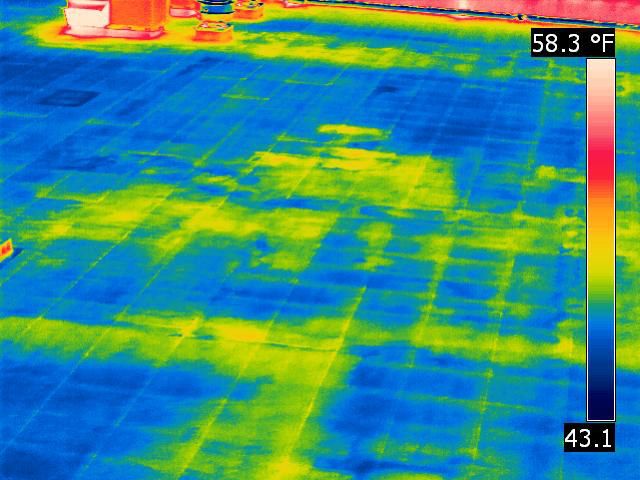
Locating the exact point of moisture intrusion into a commercial roof system can be an extremely difficult and frustrating mission. A leak that is exposed on a ceiling inside of the building is almost certainly distant from the actual leak supply. Destructive testing can be expensive and disruptive, yet it is frequently the selected method when there are no visible means to trace back to the origin.
An infrared survey of most commercial roof systems can identify and document wet areas below the roof membrane, saving our clients costly and unnecessary repairs. Roof scans can be performed as part of a new or renovated “building commissioning” process or as a pre-purchase investigation to verify the condition of the roof.
HVAC
Heating and air conditioning units on commercial buildings can run inefficiently and cause unwanted loads to be placed on surrounding equipment. Running too hot or too cold can shorten the life of your equipment and cause unwanted failure during peak loads when higher demands are being put on your heating and cooling equipment. Scheduling an infrared survey of HVAC equipment can identify any load imbalances and allow you to initiate repairs prior to failure. HVAC scans can be performed as part of a new or renovated “building commissioning” process or as a pre-purchase investigation to verify the condition of the equipment.
Heat Loss
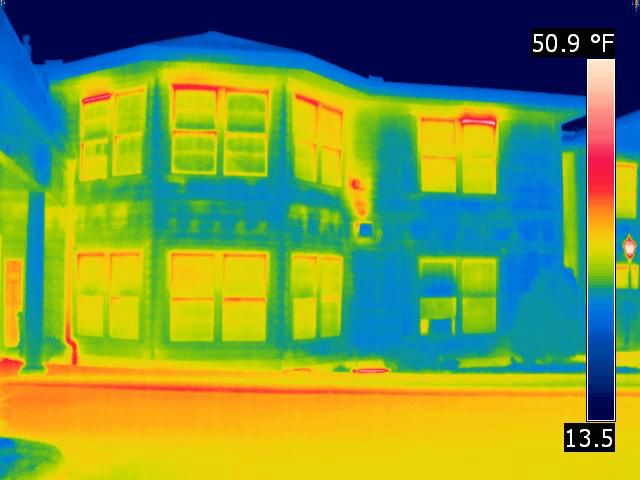
Air leakage is the primary source of heat loss in a commercial building envelope. The number one complaint from employees in regards to heat is the discomfort caused by a cold draft. Thermal imaging of the exterior walls and ceilings will often reveal inadequate insulation as well as air infiltration around doors, windows and other fenestration points on a building.
Correcting heat loss problems will increase the comfort level of the occupants and decrease the energy cost to operate the building.
Product Testing and Development

Infrared imaging has become an indispensable tool for many engineering disciplines and most notably for new products. Studying the heat generation and dissipation of a product in its early stages of development minimizes design iterations which dramatically reduce development costs. Products are also better designed and optimized, improving their reliability, safety and cost.
At Projected 2 Perform, we offer the entire “spectrum” of scientific infrared imaging. Our FLIR model SC660 camera is one of the most advanced thermal imaging instruments to date. These cameras provide the highest resolution images and data output available in the industry.
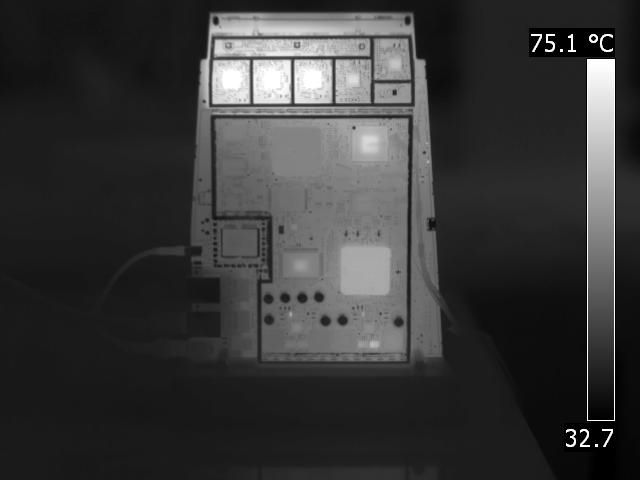
We can measure a steady temperature pattern as well as thermal evolution over time. We identify thermomechanical properties caused by stress testing for breakpoint and optimization analysis. We are capable of real-time streaming video with full radiometric data and frame by frame images, each with over 300K spreadsheet exportable temperature measurements, to satisfy even the most serious number crunchers.
Imaging Qualifications We Offer
- Highest Resolution Images — 640 x 480
- JPEG Image Format with Full Radiometric Data
- 307,000 Individual Temperature Measurement Pixels
- Temperature Application Range — 40° to 1500° C
- Thermal Sensitivity ≤ 45 mK
- Thermal/Digital Image Fusion
- Streaming Video with Full Radiometric Data/Trend Analysis
Equine Infrared Services

Infrared thermography is uniquely suited for the preventive maintenance and medical diagnosis of horses and other equines because the vast majority of injuries with horses occur in the lower legs where the skin is extremely close to bone and joints.
Infected hooves, cracked bones, damaged joints and pulled tendons become warmer as the body delivers more blood to an injured area to promote healing. Likewise, with the jaw area as related to a tooth infection. Saddles rub directly on the skin creating friction and heat which can be mapped for saddle fit adjustment.
Equine thermography senses heat differences on the surface of the skin to within fractions of degrees and detects heat patterns that pinpoint problems before they become serious. In many cases, lameness issues have been detected weeks before an onset. Regular monitoring of horses in competition training can ascertain how a treated injury is healing.
At Projected 2 Perform, we can refer you to specialized equine thermographers throughout the country that will work directly with veterinarians, farriers, saddle makers and qualified horse owners to get and keep their horse client in peak condition.